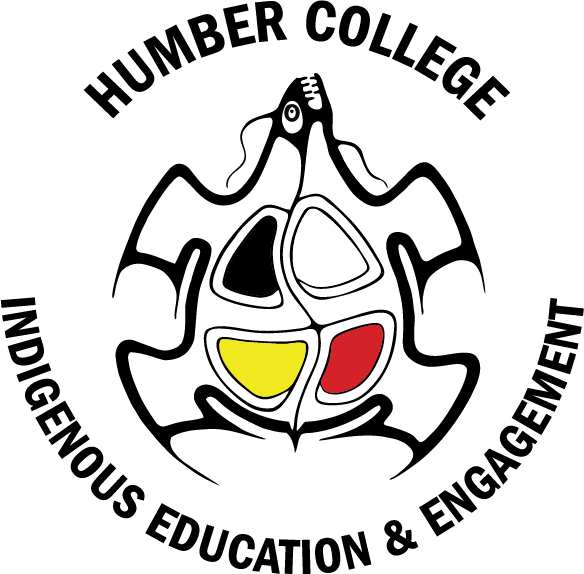Humber College’s Indigenous Cultural Markers at its North and Lakeshore Campuses place the College in the context of the geography, history, and landscape of Indigenous Peoples in the Greater Toronto Area. A physical land acknowledgment, these markers act as a bridge between cultures, encouraging learning and sharing of Anishinaabe stories in the everyday context of students, staff, faculty, and the wider community at Humber College.The markers weave seamlessly into a mix of architecture and landscape settings from various periods—from the high Victorian architecture of the 19th Century former Lakeshore Psychiatric Hospital, to the newly-opened CTI Building at the North Campus. In so doing, these projects serve as a model on how to integrate design that acknowledges, and celebrates, Indigenous culture in our built environment.
Site A, a sculptural beacon in the Barrett Centre for Technology and Innovation, is a representation of the seven stages of life. Site B, the Welcome Centre, is a reimagined concrete entry pathway with embedded markers symbolizing migration stopping points and cultural iconography related to the story of the migration of the Anishinaabe People along the Great Lakes.
Site C, the Courtyard installation, honours the Carrying Place Trail, the pathway that links Lake Ontario and Lake Simcoe and beyond. Installations raise the knowledge of specific places along the route of the trail. Each marker has a unique pattern and name in Ojibwe.
The development of the markers and the stories they help to tell has been led and told by indigenous voices, including Humber’s Elder and Advisor on Aboriginal Relations, the college’s Aboriginal Education Council, communities and students.Humber’s Indigenous Cultural Markers were originally displayed as part of Ryan Gorrie’s participation in UNCEDED: Voices of the Land, a showcase of Indigenous architects from Turtle Island (Canada and the USA) at the 2018 Venice Biennale of Architecture.
View architecture firm, Bruce McIlroy's, webpage featuring the project here.
Project Credits
The Indigenous Cultural Markers were created in partnership with Indigenous Education and Engagement at Humber College.



